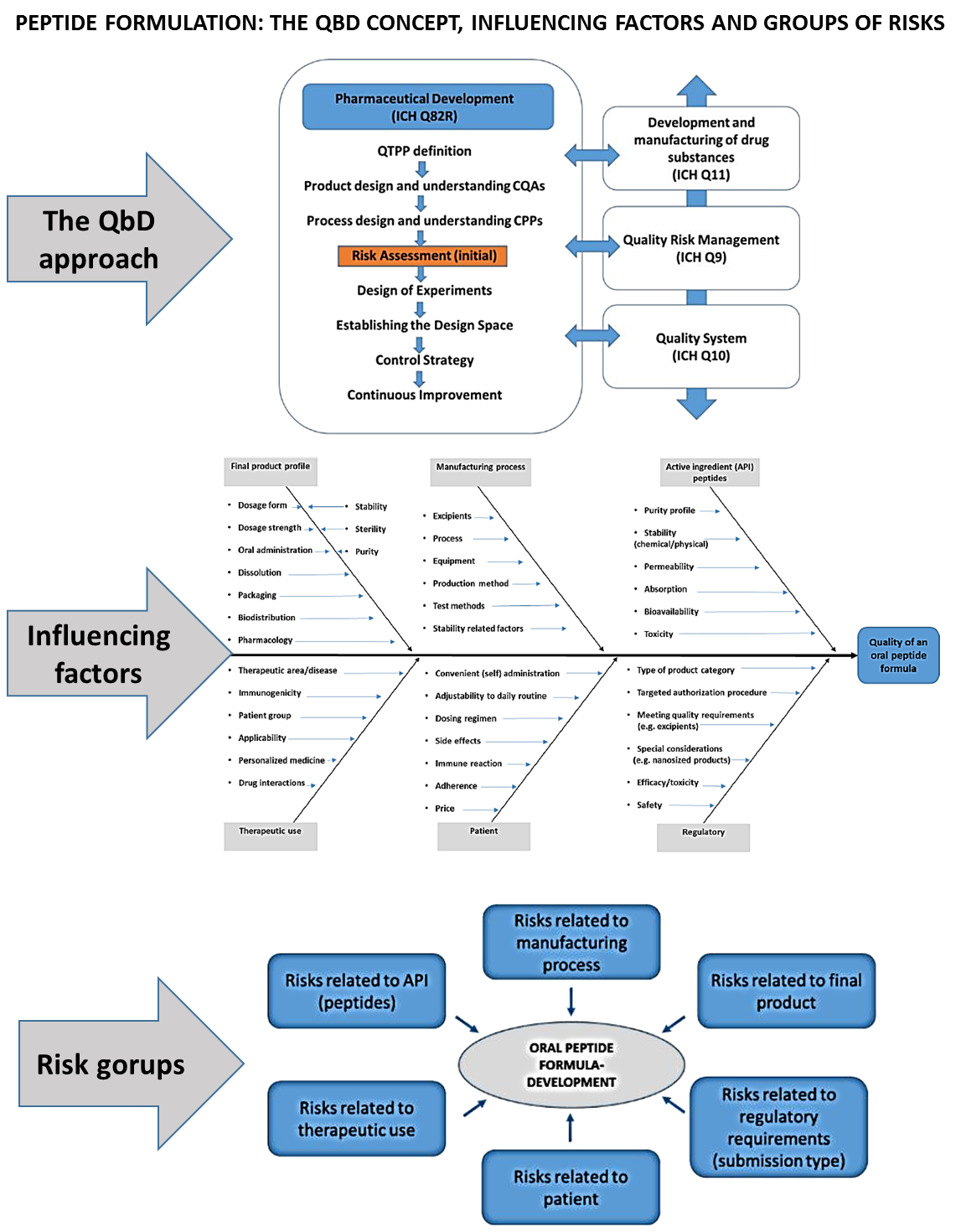SZTE Nanomedicine Research Group
Principal investigator: Prof. Dr. Ildikó Csóka
Quality by Design (QbD) and Risk Assessment (RA) in biologicals and peptide formulation

The Quality by Design (QbD) approach is a holistic, systematic, knowledge and risk-based methodology of the pharmaceutical development approach, which is proactive and focuses on the profound preliminary design.
QbD has several steps, which are described in the relevant guidelines of the International Council of Harmonisation (ICH), namely in the ICH Q8R2, Q9, Q10 papers.
The implementation of QbD in the manufacturing of medicinal products is often called the “GMP of the 21st century”; regulatory authorities strongly force the pharmaceutical industry to apply this strategic planning approach. The adaptation and application of this methodology into the early research phases within the R&D activities hold many advantages1, as QbD based early development brings scientific results closer to the practical requirements and has a facilitating effect on the industrial scale-up and product transfer to the market.
As QbD strategy is a Risk Assessment (RA) centered approach, where the experiments in practice are based on the critical factors with most highly critical effect on the aimed target product, the application of it in R&D projects23 is especially useful by the development of such complex formulations which need interdisciplinary thinking, like biologicals and peptide manufacturing4. In this case, the extended QbD concept can be applied1 especially focused on the preformulation design.
Several challenges and many risks are entailed in formulating dosage forms containing peptide drugs (or other biologicals). These structures are more complex and heterogeneous in nature than chemical drugs. So peptide type drug substances containing formulations can be handled as high-risk dosage forms due to their complexity in both composition and preparation design. RA should be considered as a crucial part of the development process. The highly focused RA fields in peptide drug formulation are the following: (1) The drug substance, especially characteristics related to its stability and quality. (2) The manufacturing process, also related to the drug substance and product stability. Small changes in the production process could have a great effect on quality thus influencing the safety, efficacy and side effects related to the therapeutic application. These are strongly connected to the immunogenicity aspects (3).
The QbD based formulation development led to saving time and effort by directing the effort toward the critical points of the R&D3 5 6 of the biologicals and peptides, thereby leading to effective formulation development.
References:
1. Csóka I, Pallagi E, Paál TL. Extension of quality-by-design concept to the early development phase of pharmaceutical R&D processes. Drug Discov Today. 2018. doi:10.1016/j.drudis.2018.03.012
2. Pallagi E, Ambrus R, Szabó-Révész P, Csóka I. Adaptation of the quality by design concept in early pharmaceutical development of an intranasal nanosized formulation. Int J Pharm. 2015;491(1-2). doi:10.1016/j.ijpharm.2015.06.018
3. Pallagi E, Karimi K, Ambrus R, Szabó-Révész P, Csóka I. New aspects of developing a dry powder inhalation formulation applying the quality-by-design approach. Int J Pharm. 2016;511(1). doi:10.1016/j.ijpharm.2016.07.003
4. Ismail R, Csóka I. Novel strategies in the oral delivery of antidiabetic peptide drugs – Insulin, GLP 1 and its analogs. Eur J Pharm Biopharm. 2017;115:257-267. doi:10.1016/j.ejpb.2017.03.015
5. Karimi K, Pallagi E, Szabó-Révész P, Csóka I, Ambrus R. Development of a microparticle-based dry powder inhalation formulation of ciprofloxacin hydrochloride applying the quality by design approach. Drug Des Devel Ther. 2016;10. doi:10.2147/DDDT.S116443
6. Gieszinger P, Csóka I, Pallagi E, et al. Preliminary study of nanonized lamotrigine containing products for nasal powder formulation. Drug Des Devel Ther. 2017;11. doi:10.2147/DDDT.S138559

